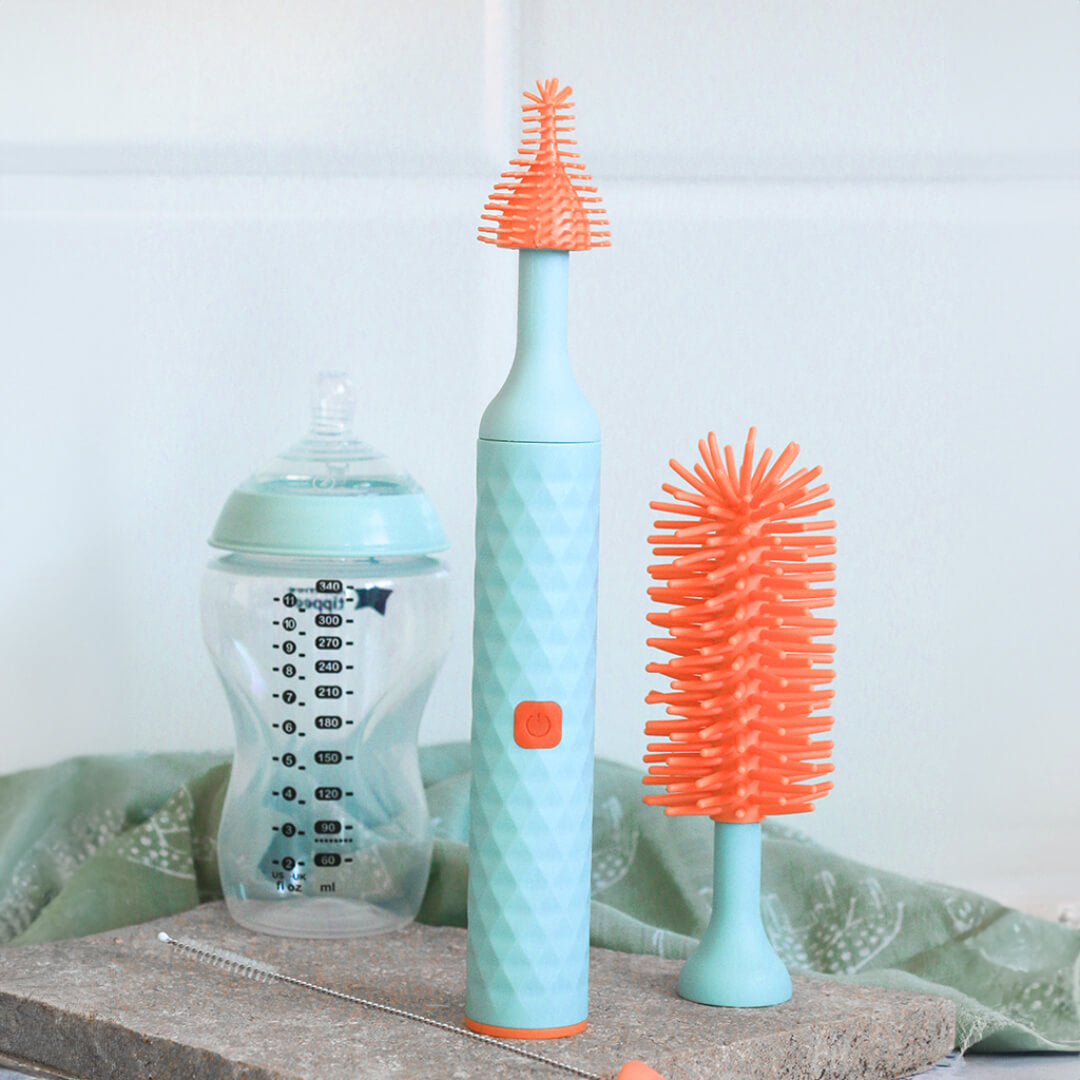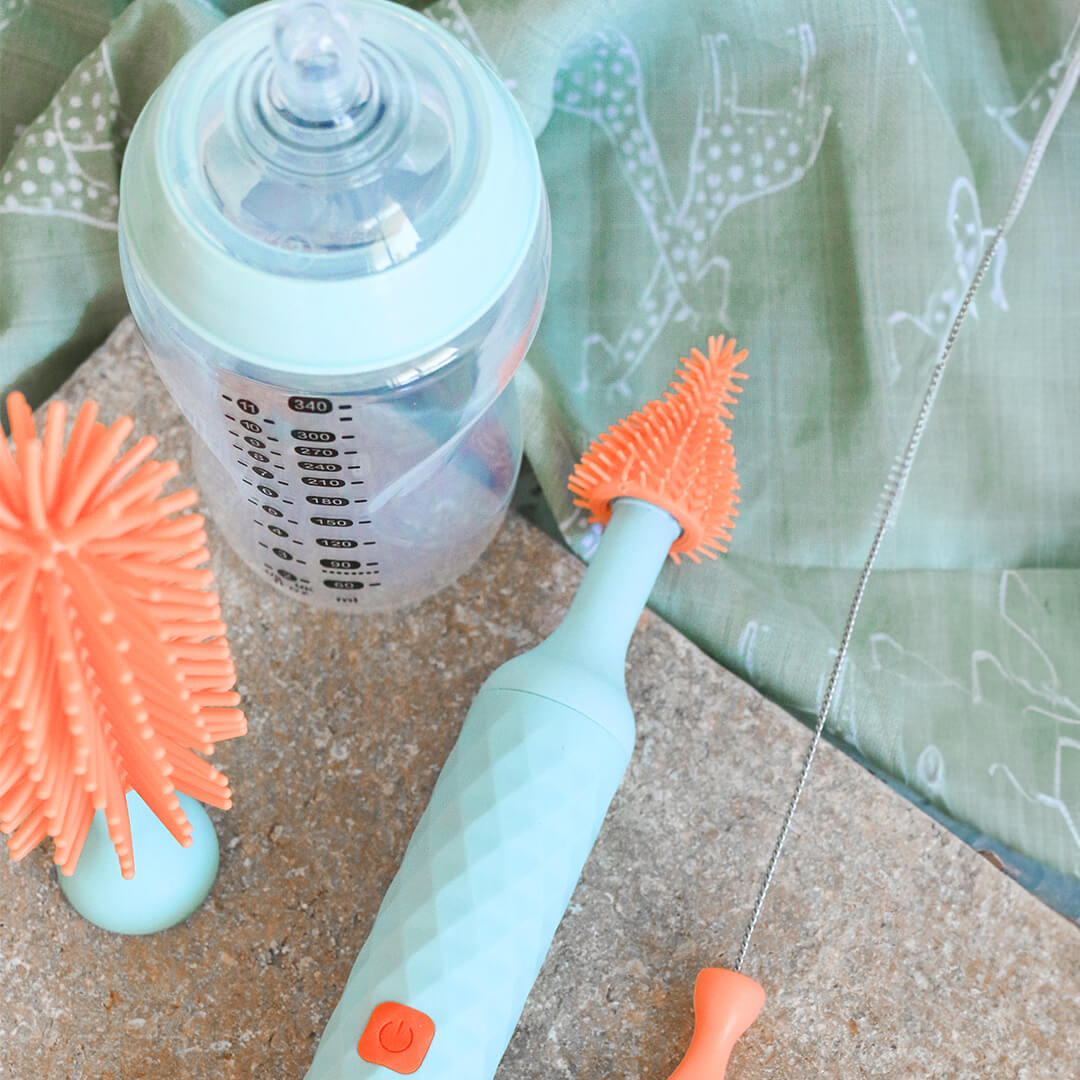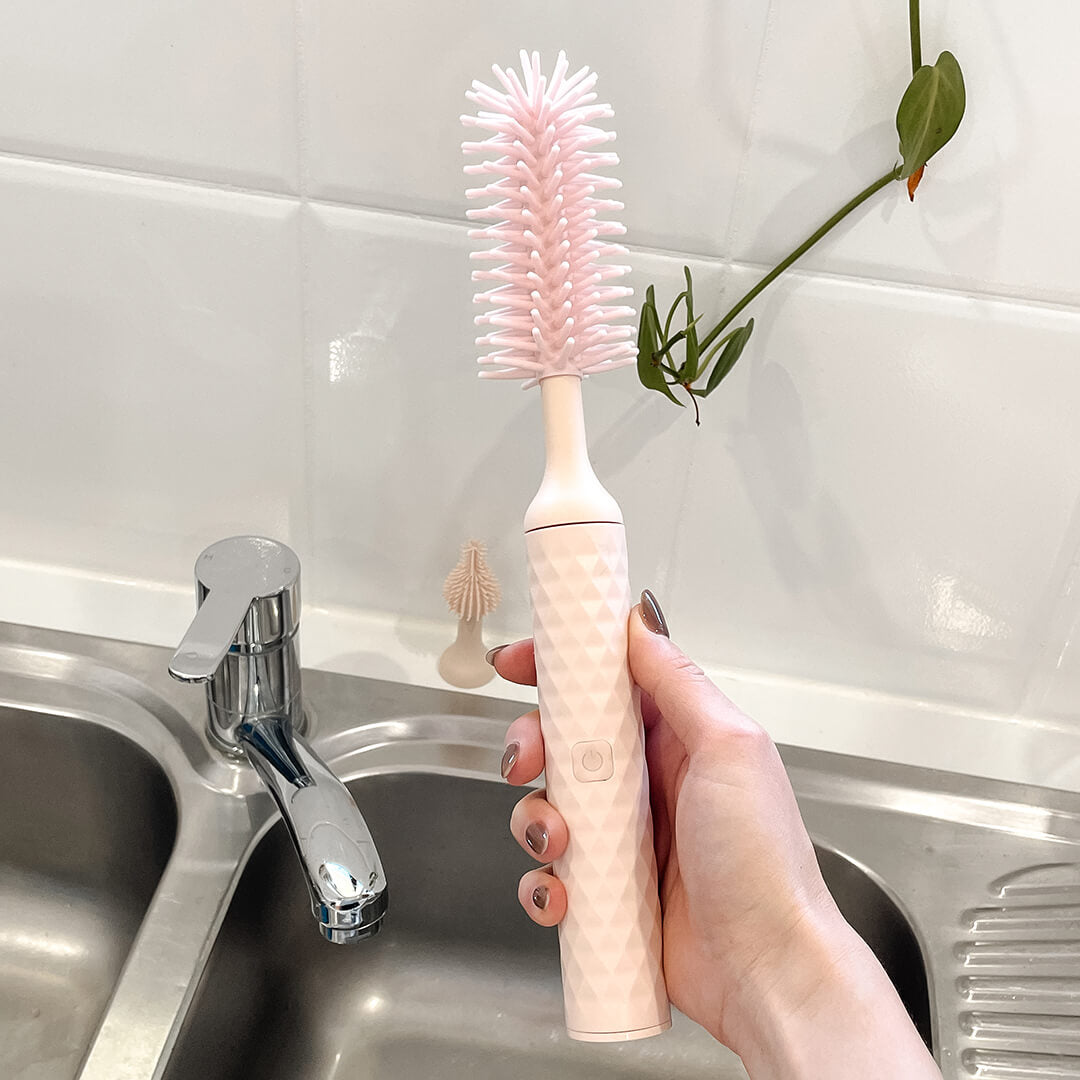
Bacteria 101: Understanding the Hidden Dangers Lurking in Baby Bottles
Share
Introduction
As mothers, we strive to provide our little ones with the utmost care and protection, especially during their vulnerable years. When it comes to feeding our babies, we often trust baby bottles to deliver essential nutrients. However, what we may not realize is that lurking within those seemingly innocent bottles are hidden dangers in the form of bacteria. In this article, we will delve into the world of baby bottle bacteria, understand their potential risks, and learn how to keep our baby's feeding utensils safe and clean.
2. The Importance of Clean Baby Bottles
When it comes to caring for our babies, cleanliness should be a top priority. Ensuring that baby bottles are clean and free from harmful bacteria is crucial for the well-being of our little ones. Babies have developing immune systems, making them susceptible to infections. Dirty bottles can become breeding grounds for bacteria, posing a significant risk to our baby's health.
3. Identifying the Culprits: Common Bacteria in Baby Bottles
Our baby's bottles may look clean to the naked eye, but harmful bacteria can still be present. Some common types of bacteria found in baby bottles include:
- E. coli: This bacterium can lead to severe gastrointestinal issues.
- Salmonella: Responsible for causing food poisoning and other related illnesses.
- Staphylococcus Aureus: Can result in skin infections and respiratory issues.
Understanding these bacteria can help us realize the importance of thorough bottle cleaning and sanitization.
4. The Impact of Bacteria on Your Baby's Health
The presence of bacteria in baby bottles can have adverse effects on our little one's health. From mild stomach upsets to more severe infections, our babies are at risk when exposed to these harmful microorganisms. Bacteria in bottles can lead to:
- Digestive Problems: Diarrhea, vomiting, and discomfort.
- Respiratory Infections: Coughing, wheezing, and difficulty breathing.
- Skin Irritations: Rashes and infections.
As mothers, it's essential to be proactive in safeguarding our child's health by ensuring clean and bacteria-free baby bottles.
5. Proper Cleaning and Sanitization Techniques
To protect our babies from harmful bacteria, proper cleaning and sanitization of baby bottles are paramount. Here are the steps to follow:
- Disassemble Bottles: Take apart all components, including the nipple, collar, and cap.
- Pre-Rinse: Rinse the bottle and its parts with warm water immediately after use.
- Use Hot, Soapy Water: Wash the bottles with a bottle brush and mild soap, paying close attention to the nipple's nooks and crannies.
- Sterilize Regularly: Boil the bottles in water for 5 minutes or use a steam sterilizer to kill remaining bacteria.
- Air Dry: Let the bottles air dry on a clean drying rack.
6. Choosing the Right Baby Bottles to Minimize Bacterial Growth
Opting for the right baby bottles can play a significant role in reducing bacterial growth. Consider the following factors when choosing baby bottles:
- Bottle Material: Choose bottles made of glass or BPA-free plastic.
- Anti-Colic Features: Bottles with anti-colic vents can reduce the amount of air ingested by your baby.
- Easy to Clean Design: Select bottles with a simple design, making them easier to clean and sanitize.
7. Sterilization: Is it Necessary?
Sterilization is a debated topic among parents. While some argue it is necessary to kill bacteria effectively, others claim that thorough cleaning alone is sufficient. The decision ultimately rests with the parent, but combining proper cleaning and periodic sterilization can be an effective approach to ensure your baby's safety.
8. Best Practices for Bottle Storage
Proper bottle storage is often overlooked but equally crucial to prevent bacterial growth. Follow these best practices:
- Use Sealed Containers: Store clean bottles in sealed containers to protect them from dust and other contaminants.
- Refrigerate Formula: If preparing formula in advance, refrigerate the bottles promptly.
- Avoid Prolonged Storage: Do not leave formula or breast milk in bottles for extended periods.
9. Signs of Contaminated Baby Bottles
Knowing the signs of contaminated baby bottles can help you take quick action to protect your baby's health. Look out for:
- Foul Odor: If the bottle smells sour or unpleasant after washing, it may be contaminated.
- Cloudy Appearance: Cloudy residue in the bottle or nipple can indicate bacterial growth.
- Mold Growth: Check for any signs of mold in the bottle's nooks or on the nipple.
10. Keeping Baby Bottles Bacteria-Free On-the-Go
When you're on-the-go, maintaining clean bottles can be challenging. However, with a few simple tips, you can ensure your baby gets the best, even while traveling:
- Use Travel Bottle Sterilizers: Portable bottle sterilizers are great for quick sanitation.
- Carry Extra Bottles: Pack a few extra bottles to avoid using dirty ones in emergencies.
- Disposable Liners: Consider using disposable bottle liners when clean water and soap are scarce.
11. Health Risks: When to Consult a Pediatrician
Despite our best efforts, babies can still fall sick. If you notice persistent health issues or unusual symptoms in your baby, it's essential to consult a pediatrician promptly. Early detection and treatment can prevent complications and help your baby recover faster.
12. Alternative Feeding Options: Pros and Cons
If you're concerned about the risk of bacteria in baby bottles, you might consider alternative feeding options. Let's explore some alternatives and their pros and cons:
- Breastfeeding: Provides essential nutrients and boosts the baby's immune system, but it may not always be feasible for every mother.
- Cup Feeding: Introduces babies to cups early on, but some babies may find it challenging to transition.
- Ready-to-Feed Formula: Convenient, but it can be costly in the long run.
13. Myths about Baby Bottle Bacteria Debunked
There are many misconceptions surrounding baby bottle bacteria. Let's debunk some common myths:
- Myth 1: Bottles are Sterile After Dishwasher Use. Fact: Dishwashers may not reach high temperatures required for complete sterilization.
- Myth 2: Bacteria in Bottles are Harmless. Fact: Some bacteria can cause severe infections in babies.
- Myth 3: Boiling Water Kills All Bacteria. Fact: While boiling water helps, it may not eliminate all bacteria.
14. Creating Healthy Bottle-Feeding Habits
Incorporate these healthy bottle-feeding habits into your routine:
- Regular Inspection: Inspect bottles before each use to ensure they are clean and in good condition.
- Rotate Bottles: Avoid using the same bottles excessively; rotate them to reduce wear and tear.
- Encourage Independence: As your baby grows, encourage self-feeding to minimize contact with bottles.
15. Conclusion
As mothers, it is our responsibility to protect our little ones from harm. Understanding the potential dangers of baby bottle bacteria is the first step towards ensuring our baby's safety and well-being. By implementing proper cleaning, storage, and feeding practices, we can minimize the risk of bacterial infections and provide our babies with a healthy start in life.
Frequently Asked Questions
- How often should I sterilize baby bottles?
- It's recommended to sterilize baby bottles at least once a day, especially for younger babies. As your baby grows, thorough cleaning may suffice.
- Can I reuse disposable bottle liners?
- No, disposable bottle liners are designed for single use only. Reusing them can lead to bacterial contamination.
- Are glass bottles better than plastic bottles?
- Glass bottles are generally considered safer as they do not contain harmful chemicals like BPA. They are also easier to clean and sterilize.
- Can I use bleach to clean baby bottles?
- It is not advisable to use bleach on baby bottles, as it can leave harmful residues. Stick to mild soap and hot water for cleaning.
- How can I remove stubborn milk residue from bottles?
- Soak the bottles in a mixture of baking soda and warm water, then scrub with a bottle brush. This should help remove stubborn residues.
Remember, your baby's health is precious. By being diligent in cleaning and maintaining baby bottles, you can protect them from harmful bacteria and ensure their well-being.














